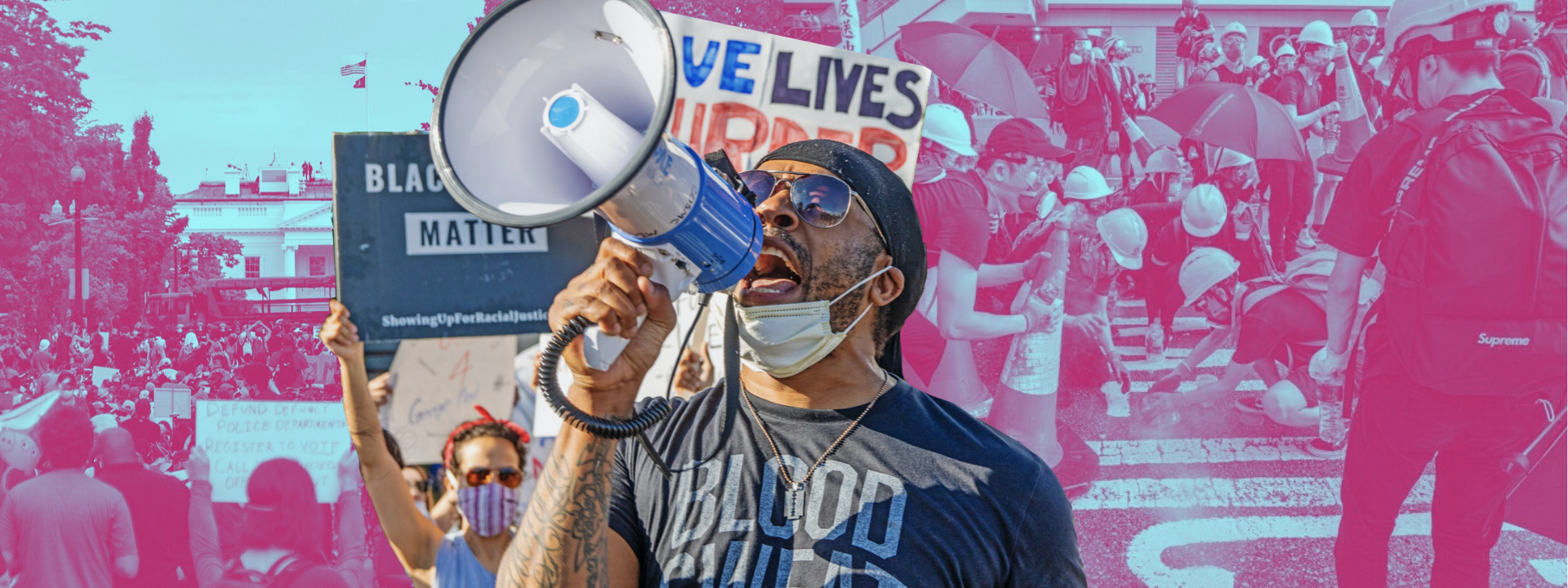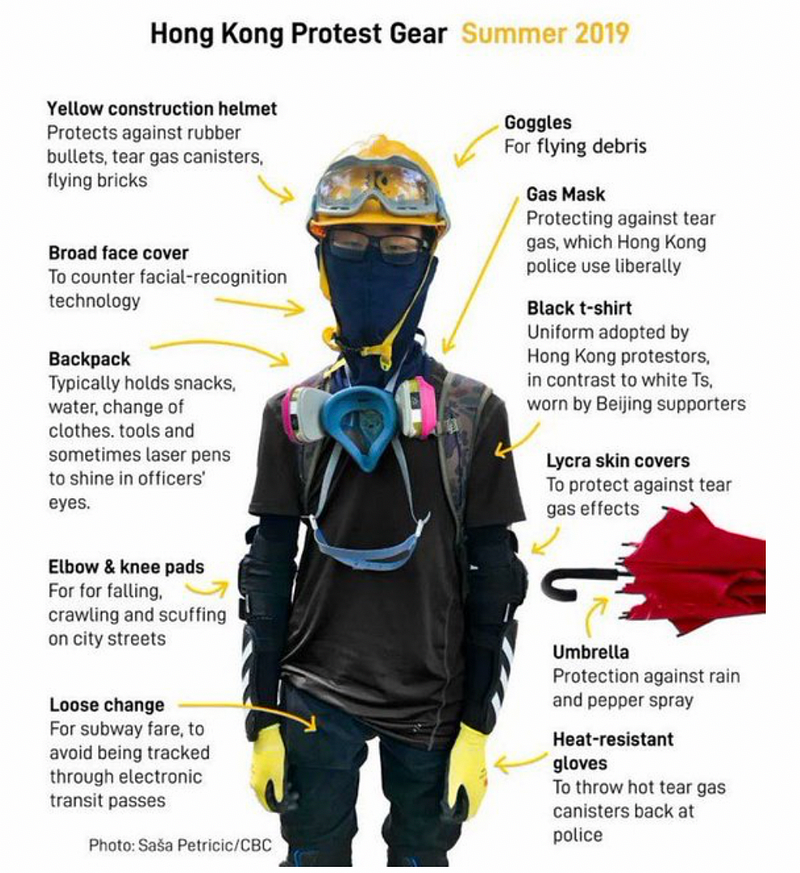How activists used social media to organize during the George Floyd protests
Social media users rapidly shifted to sharing logistical and strategic information over multiple social media platforms
How activists used social media to organize during the George Floyd protests

Demonstrators participating in the George Floyd protests in the United States used social media to share operational information throughout the protests, repurposing content from international mass-mobilization movements that have occurred over the past year.
Social media allows a movement in one place to take inspiration from another. For example, the 2019 Sudanese and Algerian uprisings used each other’s imagery interchangeably, in a similar fashion to the Arab Spring in 2011. The George Floyd protests are playing out across transnational online spaces, and, in turn, protesters in the United States are leveraging the experiences of a global user base to mobilize effectively against police brutality. And while significant attention and reporting energy is paid to disinformation and misinformation around protests, social media is also a significant organizational tool for protesters around the world.
In the first week of the protests, organizational information about the protests drove conversation across multiple social media platforms. Numerous high-engagement threads offered advice from citizens around the world who had participated in mass-mobilization and pro-democracy movements elsewhere, including the 2019 protests in Chile, Hong Kong, Lebanon, and Sudan. An infographic breaking down how to dress like a Hong Kong protester, for example, was recycled and repurposed as a guide for demonstrators in the United States.
DIY Protest: information spread on U.S. social media
Like other large demonstration movements that have occurred over the past year, U.S. protesters used social media to share organizational and operational information about the protests in their respective cities. Demonstrators used Twitter hashtags — including #LosAngelesProtest, #DCProtest, #atlantaprotest, and #Minneapolisprotest — and posted real-time footage to facilitate locating each other and to direct crowd movements. They used multiple platforms to evade and call out police brutality. In New York, demonstrators have been using the live traffic app Waze and public safety app Citizen to flag the location of police and monitor the flow of other protesters. Demonstrators in Los Angeles started a nationwide trend, using #BLUEFALL to amplify and create a digital archive of instances of police brutality documented over the course of the protests. #BLUEFALL entered Twitter’s trending topics in the United States on the evening of June 4 and had accumulated over 1 million mentions by 494,000 unique users, according to a query using Meltwater Explore.

Demonstrators also used social media to direct the movements on the street and to share operational logistics to educate civilians about how to protest in a militarized situation. Protesters aligning themselves with the Black Lives Matter movement created “protester information cards” that contained links to instructions, legal aid, resources, and literature. Two protest cards, protestinfo.carrd.co and blacklivesmatter.carrd.co have rapidly spread, as protesters shared them on their social media accounts to help mobilize others. According to a CrowdTangle query, between May 28 and June 4, 2020, nearly 150 million Facebook posts linked to either of the cards. Over the same period these two links were interacted with an aggregate total of nearly 27 billion times on the platform, indicating an expansive and viral spread during the protests.

Safety instructions, how-to’s, and DIY protest information drove the conversation on Twitter as well; a search using Meltwater Explore indicated that the keyword phrase “protest safety” occurred in over 16,900 tweets between May 28 and June 4, a 3,302 percent increase compared to the previous seven days.

On Twitter, accounts posted safety instructions for protests, information on how to clean one’s eyes after being maced, a guide on how to construct a plywood shield, and a description of how to treat bullet wounds.
Local events, global news: international advice and imagery
As the George Floyd protests exploded across the digital environment, thousands of people across the world rallied both in person and on social media to support the demonstrators in the United States. Anti-racist solidarity protests have taken place in Abuja, Amsterdam, Berlin, Buenos Aires, Nairobi, Paris, Rio, Tel Aviv, Tokyo, and numerous other cities.
Online, global citizens who participated in large demonstration movements in their home countries not only showed solidarity with those demonstrating in the United States, but also offered advice. Numerous accounts claiming to be in Chile, Hong Kong, Lebanon, and Sudan shared operational advice drawn from their own experiences participating in mass demonstration movements over the past year.

In turn, the U.S. protesters are sharing and repurposing content and instructions that make direct reference to or were created for the late 2019 pro-democracy protests in Hong Kong. An infographic breaking down how to dress like a Hong Kong protester, for example, was widely shared via Twitter as a guide to dressing for the George Floyd protests and is included in protestinfo.carrd.co’s ‘How to Prepare for a Protest’ guide. The image was originally published on September 3, 2019 by the CBC in Canada during its coverage of the pro-democracy Hong Kong protests. Protesters in the recent U.S. protests recycled this content to inform other demonstrators about proper protest attire.

Information on “how to protest” was widely shared on large social media platforms as demonstrators in the United States used the technologies to convene, organize, and mitigate against brutality from the police and other law enforcement personnel. The operational use of social media in mass-mobilization movements is not unique to the George Floyd protests but is instead a continuation of tactics used by demonstrators across the globe.
Cite this case study:
Jacqueline Malaret, “How activists used social media to organize during the George Floyd protests,” Digital Forensic Research Lab (DFRLab), June 17, 2020, https://dfrlab.org/2020/06/17/how-activists-used-social-media-to-organize-during-the-george-floyd-protests/.

